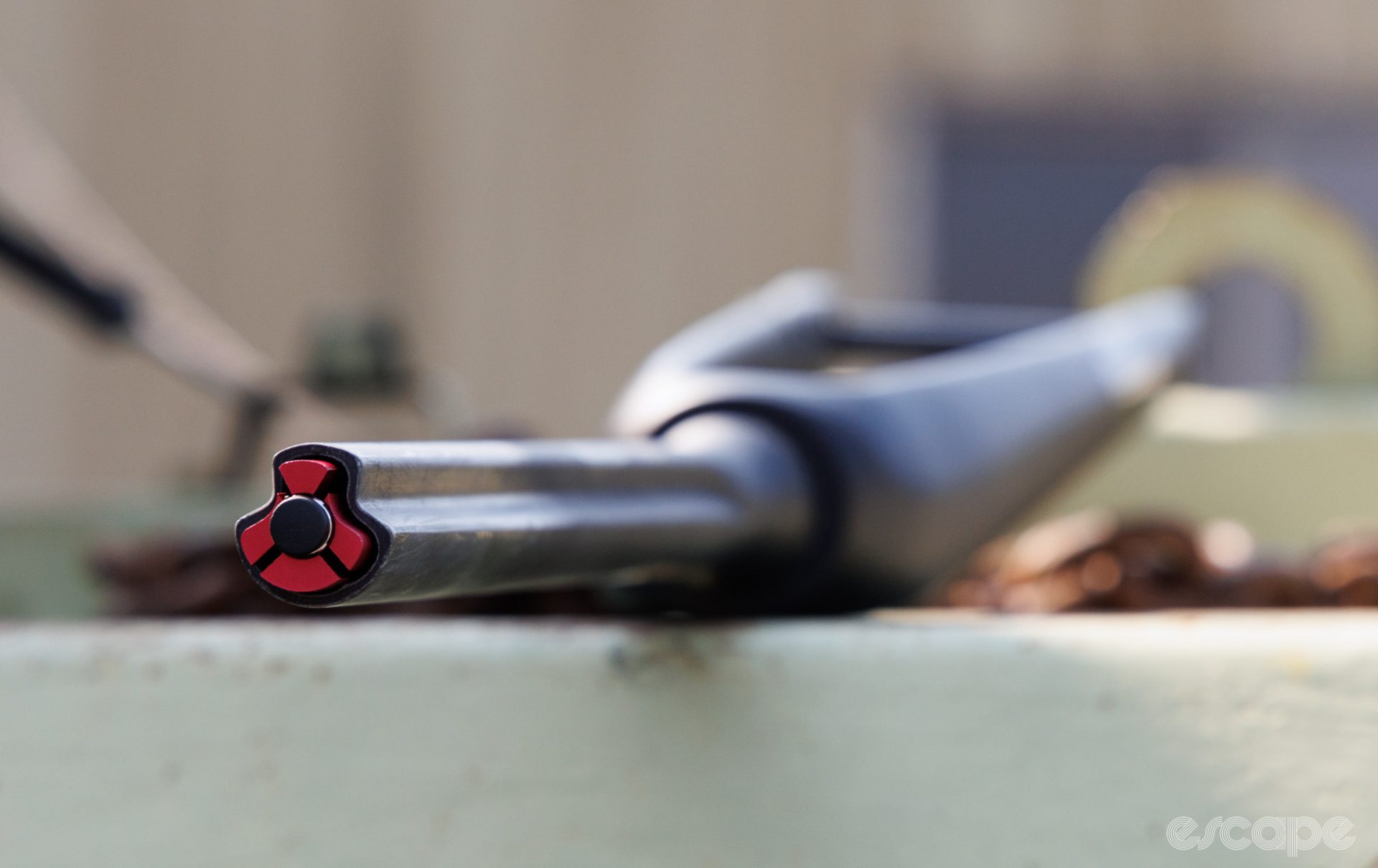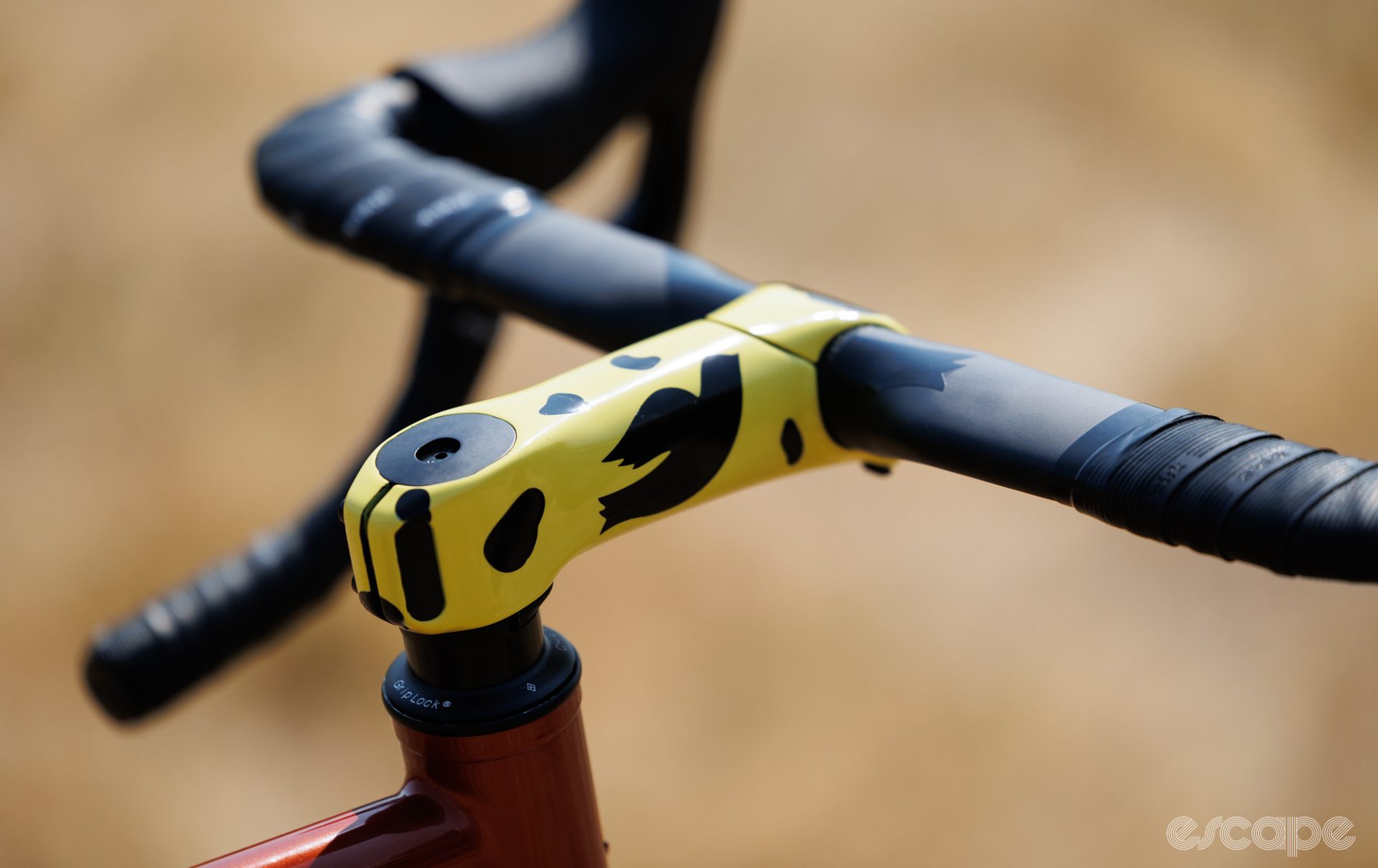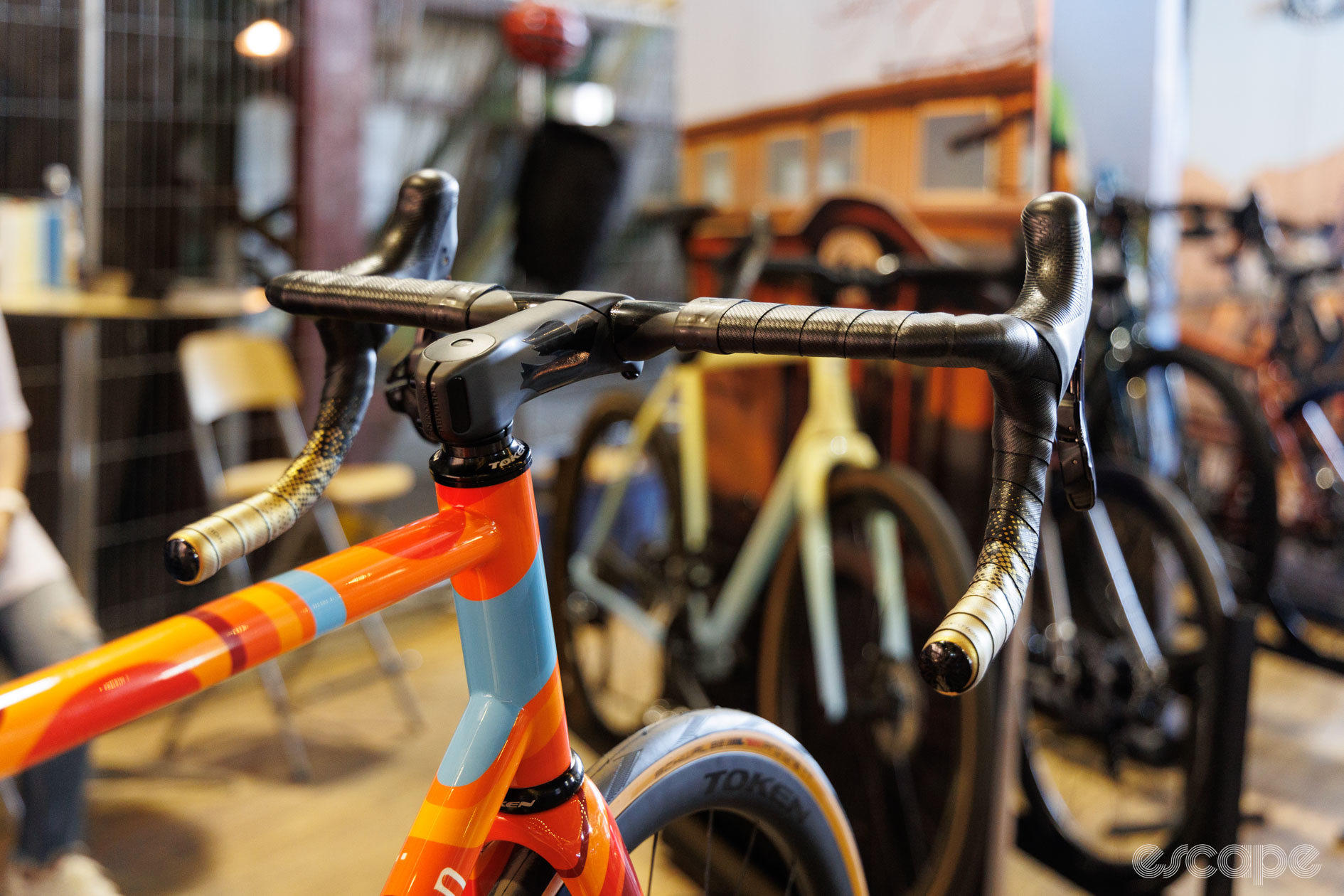Handmade bicycles have a lot in common with cooking. Even with the same starting ingredients, the possibilities are nearly endless when it comes to the final product.
When building a bicycle, those raw ingredients are commonly sourced from a select few vendors. Italy’s Columbus and England’s Reynolds are the most common picks for tubing. And then, for the pieces that sit between them, the likes of Paragon Machine Works produce many more intricate parts.
Recent years have seen Columbus, a steel tubing specialist, broaden its scope for what it offers the handbuilt world. Its assortment of tubing has grown to cater for stainless steel (XCr) and now the company has brought titanium (Hyperion) back to the range. Additionally, Columbus has steadily grown its range of carbon forks for builders to build bikes from.
Launched at the Made bike show, Columbus now offers a whole series of carbon components to offer a plug-and-play solution to builders looking for the modern aesthetic of hidden cables. The new product range is called Trittico, and it’s sure to find its way onto an increasing number of custom and boutique bikes.
Many pieces
The Trittico cockpit range is a turn-key solution for framebuilders wanting to hide cables. And unlike existing systems from Enve/Chris King, FSA, Token, and Ritchey – which all require an oversized 1.5″ top headset bearing – Columbus’ system squeezes everything within a more traditional (and smaller) 1 1/8″ top headset bearing.
The core of the Trittico system is a new carbon fibre road fork and uniquely adjustable stem. However, Columbus has also revealed matching carbon fibre handlebars, seatposts, bottle cages, and computer mounts.

“Our biggest goal is to be the best supplier for the handmade framebuilders,” said Federico Stanzani, Columbus’ brand manager.
“We saw in the market that there was a void where no one was really listening to the needs of framemakers in terms of proportions, ergonomics, aesthetics, and adjustability, and so we said, let’s start from scratch, and let’s listen to the 250 and more brands that are already using our products.
“The idea is to provide builders with adjustability and internal routing on a classic 1 1/8″ headset,” added Stanzani.
For now, the Trittico range only caters to road bikes ,with a single disc brake fork on offer. However, Columbus has confirmed that a gravel fork and handlebar are in development.
Fork and stem
Columbus’ new Futura Trefoil Road fork looks much like any other when installed in the bike, but out of the bike, you’ll quickly spot the patented trilobe-esque steerer shape that allows room for the brake hoses to run along the front side.

In testing competing products, Columbus found that some makers producing 1 1/8″ steerers weren’t offering enough stiffness in certain planes. The company’s unique shaping (and seemingly generous use of material thickness) aims to solve this.
Compatibility-wise, Columbus’ unique fork allows any 1 1/8″ stem to be clamped to it. However, for obvious reasons, Columbus can’t guarantee that every other stem has enough space or the right shaping to route the cables internally and onto the steerer smoothly.
You’ll have guaranteed compatibility if you’re using any 1 1/8″ top headset (or larger), though. Whether it’s an external cup, zero stack, or integrated standard, if the headset fits a common tapered 1 1/8″ to 1.5″ fork, it’ll work. Additionally, not much stops you from using this fork and its internal cable routing on an existing bike with a matching headset size.
Other details of this road fork include clearance for 32 mm tyres, a 367 mm axle-to-crown length, and a 425 g claimed weight (with an uncut 350 mm steerer). The fork also has bolts running through the fork blade to hold the flat mount brake caliper, with the bolts neatly concealed by a magnetic cover.
As for the intriguingly retro-looking Trittico stem, it features an interchangeable sleeve at the steerer that allows you to modify its length or angle. Using the black sleeve provides the choice of either 0 mm or a +5 mm change in length from the stock 90, 100, 110, 120, and 130 mm options. Meanwhile, using the red sleeve introduces an additional -5° slant on the stock -8° angle.

It’s worth noting that you can’t combine the sleeves; rather, you pick one or the other. And while it’s unlikely you’ll need to switch between them on a custom bike, they can be swapped without disconnecting cables/hoses.
The stem holds a common 31.8 mm handlebar and can be matched with Columbus’ new handlebar or any other handlebar that features the now-common open centre for internal cable routing. Securing the handlebar is done with three bolts, two accessed at the stem’s front edge, and the third bolt accessed by sticking a hex key from the bottom and through the centre of the stem.
This semi-hidden three-bolt clamp brings a somewhat classic look to the stem, but it also means the stem design is more conducive to custom paint. Similarly, if you ever were to strip or cross-thread a bolt, you’d replace the aluminium clamp cover rather than the custom-painted stem. A further detail I appreciate, and one missing from a few other systems, is that you can run headset spacers above the stem while dialling in your stem height (though you’ll want split spacers for ease of removal).

The stem is claimed to weigh 176 g in a 110 mm length.
Other pieces
Columbus’ Trittico product family extends well beyond a fork and stem. The matching 200 g carbon seatpost offers a flip clamp that switches between 25 and 15 mm of setback. It’s offered in 27.2 and 31.6 mm diameters, each in a 350 mm length.
The Trittico carbon handlebar has a number of ergonomic elements, with a flat top and “incisions” in the drops that aim to provide better holding comfort and easier brake reach. It’s suitable for use with both fully internal routing and external routing (such as rim brake bikes).

The bars are currently only available in a short reach (71 mm) shape and a somewhat limited range of 40, 42 and 44 cm widths. There’s a 128 mm drop that has a 4° flare. The bars are claimed to weigh 243 g for a 42 cm.
Finally, there are matching 18 g carbon fibre bottle cages with a generous 25 mm height adjustment, plus an aluminium universal computer mount, which uses a now common integrated (inline) mounting method.
Concerns and limitations
On paper, this system solves several annoying nuances with other systems. Most significantly, it fits through a normal headset, leaving the builder free to choose the frame design, headset, and other accompanying parts. It also allows for mostly unhindered stem height adjustment (assuming split headset spacers are used). That said, I have some concerns worth raising (many of which are solvable).
Firstly, there’s the hopefully temporary issue of such a limited range. The fork is only available in a 45 mm rake. The seatpost is only available with 25 or 15 mm setback. The stems don’t go below 90 mm. And the handlebars stop at 40 cm. It’s very early days for the Trittico range, so hopefully, more options surface as demand grows.
With only room down the steerer for two brake hoses, the system is also specific to wireless electronic drivetrains. Although I don’t see this as much of an issue given how much nicer mechanical drivetrains are with externally accessed cabling.
While no surprise, the Trittico system also doesn’t solve for the most common of complaints regarding internal cable routing. The hoses are routed through the stem and then through the top headset bearing. Replacing either the stem or headset bearings will require cutting off the brake hoses and having the brakes bled. That’s the cost of clean aesthetics!
Perhaps more concerning is that Columbus is leaving the headset selection up to the builder. The “Ring of Death” is a phrase coined by carbon expert Raoul Luescher in reference to the wear-induced ring that can be created on carbon steerers when a headset is run loose. The unique steerer shape of the Futura Trefoil Road means reduced surface area on the front side (where the wear historically occurs), and so I do have my concerns about builders equipping appropriate headsets to mitigate this potential safety issue.
And finally, there’s the shape of the steerer. Again, Luescher has historically been vocal about designing for repeatable manufacturing with carbon fibre. A round tube is repeatable, but a curvy tube with tight radii is significantly harder to make properly and consistently. Thankfully, and at least visually, it does appear that Columbus hasn’t skimped on the material thickness here, and given the product weights, it appears these products are perhaps a little overbuilt (not a bad thing).
More to come
It’s early days for Columbus’ entry into the cockpit world, and there’s that gravel version to come.
Early signs suggest several builders will soon be (or already are) offering bikes with Trittico. At Made, those early adopters included Ioklin, Onguza, and Victoire. And given that I was told Columbus has already received hundreds of orders, it’s a safe bet this system is set to become a popular pick in the handmade scene.
My favourite part is that it brings more choice to the handmade world. And for those that hate it, the good news is that just about every framebuilder will happily still make you a bike with hoses you can hold onto – in fact, many builders insist on doing so.
What did you think of this story?

